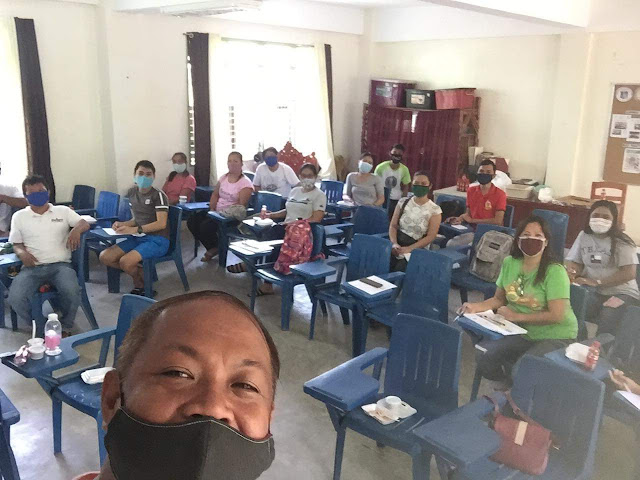Bayambang National High School (Infanta)
Official School Website, e-Magazine, and Digital Transparency Board
Monday, 28 June 2021
Wednesday, 23 June 2021
Tuesday, 8 June 2021
Friday, 18 December 2020
Additional Handwashing Facilities Installed at BNHS-Infanta
Bayambang National High School-Infanta installed additional handwashing facilities near the school's gate as part of the health and safety measures against the spread of COVID-19.
Parents who are entering the school premise to submit modules of their children are directed to wash their hands in the handwashing facilities. Then, the security guard of the school will check their temperature and provide them health declaration form to be filled up by the parents.
Sunday, 20 September 2020
School-Based Management MOVs

School-based management (SBM) is a strategy to improve education by transferring significant decision-making authority from state and district offices to individual schools. SBM provides principals, teachers, students, and parents greater control over the education process by giving them responsibility for decisions about the budget, personnel, and the curriculum. Through the involvement of teachers, parents, and other community members in these key decisions, SBM can create more effective learning environments for children.
FOUR DIMENSIONS OF SCHOOL-BASED MANAGEMENT
A. LEADERSHIP AND GOVERNANCE
A network of leadership that provides the vision and direction to the education system making it relevant and responsive to the contexts of diverse communities.

B. CURRICULUM AND INSTRUCTION
The learning systems collaboratively developed and continuously improved, anchored on the community and learners' contexts and aspirations.

- The curriculum provides for the development needs of all types of learners in the community.
- The implemented curriculum is localized to make it more meaningful to the learners and applicable to life in the community.
- A representative group of school and community stakeholders develop methods and materials for developing creative thinking problem solving.
- The learning System are regularly and collaboratively monitored by the community using appropriate tools to ensure the holistic growth and development of the learners and the community.
- Appropriate assessment tools for teaching and learning are continuously reviewed and improved and assessment results are contextualized to the learner and local situation and the attainment of the relevant life skills.
- Learning Managers and Facilitators (teachers, administrators and community members)nurture values and environments that are protective to all children and demonstrate behaviors consistent to the organization’s vision, mission and goals.
- Methods and resources are learner and community- friendly, enjoyable, safe, inclusive, and accessible and aimed at developing self-directed learners. Learners are equipped with essential knowledge, skills and values to assume responsibility and accountability for their own learning.
C. ACCOUNTABILITY AND CONTINUOUS IMPROVEMENT
A clear, transparent, inclusive, and responsive accountability system is in place, collaboratively developed by community stakeholders, which monitors expected and actual performance, continually addresses the gaps, and ensures a venue for feedback and redress.

D. MANAGEMENT OF RESOURCES
Resources are collectively and judiciously mobilized and managed with transparency, effectiveness, and efficiency.

Tuesday, 16 June 2020
Saturday, 6 June 2020
Faculty meeting conducted in preparation for "New Normal"
Blog Archive
-
►
2020
(45)
- ► December 2020 (1)
- ► September 2020 (1)
- ► April 2020 (17)
- ► March 2020 (15)
- ► February 2020 (8)
-
►
2019
(18)
- ► November 2019 (13)
- ► October 2019 (4)
- ► August 2019 (1)




